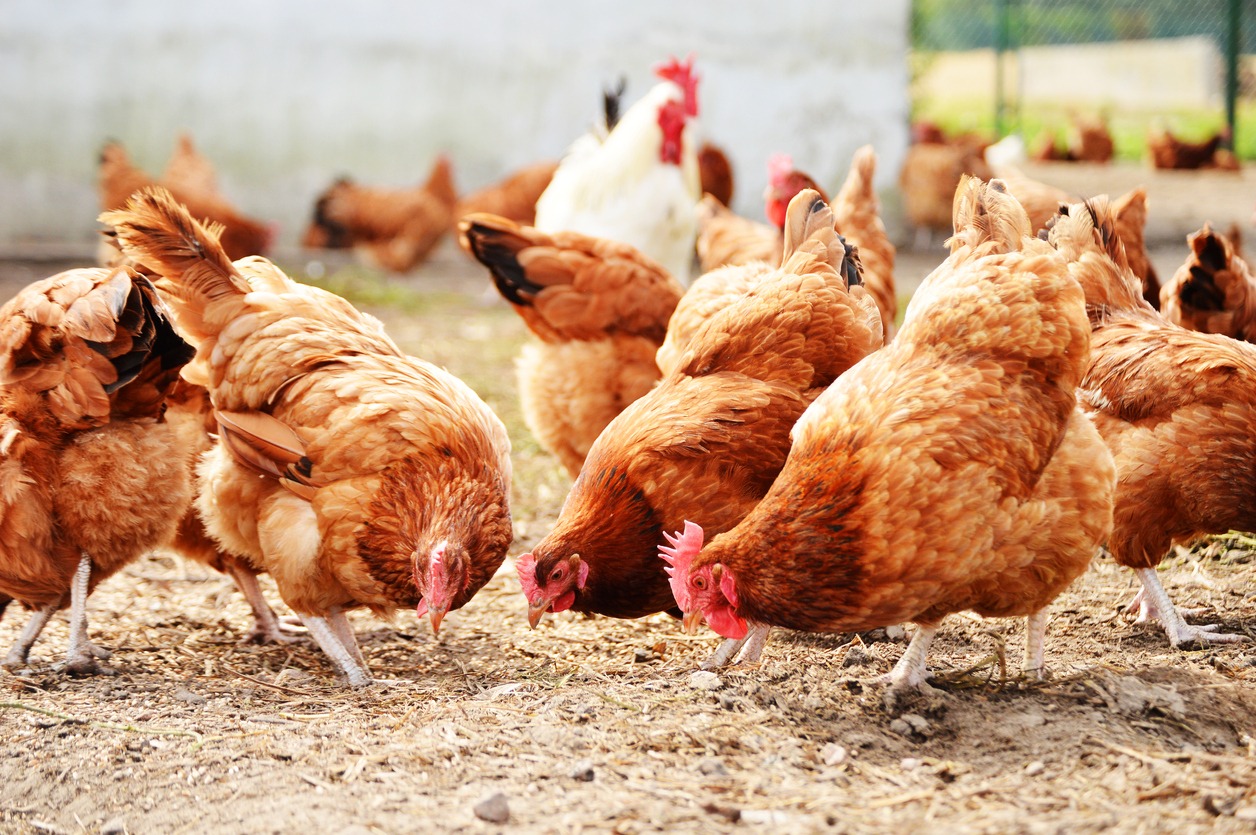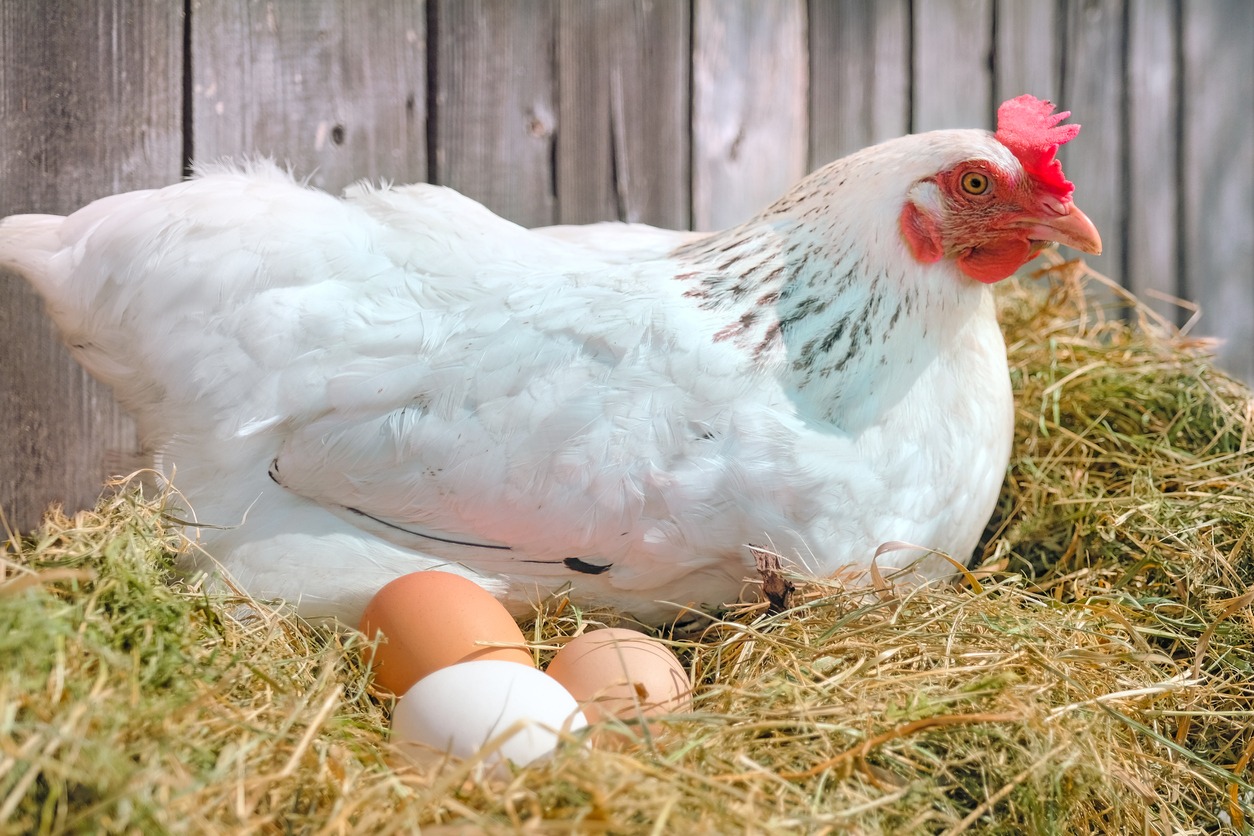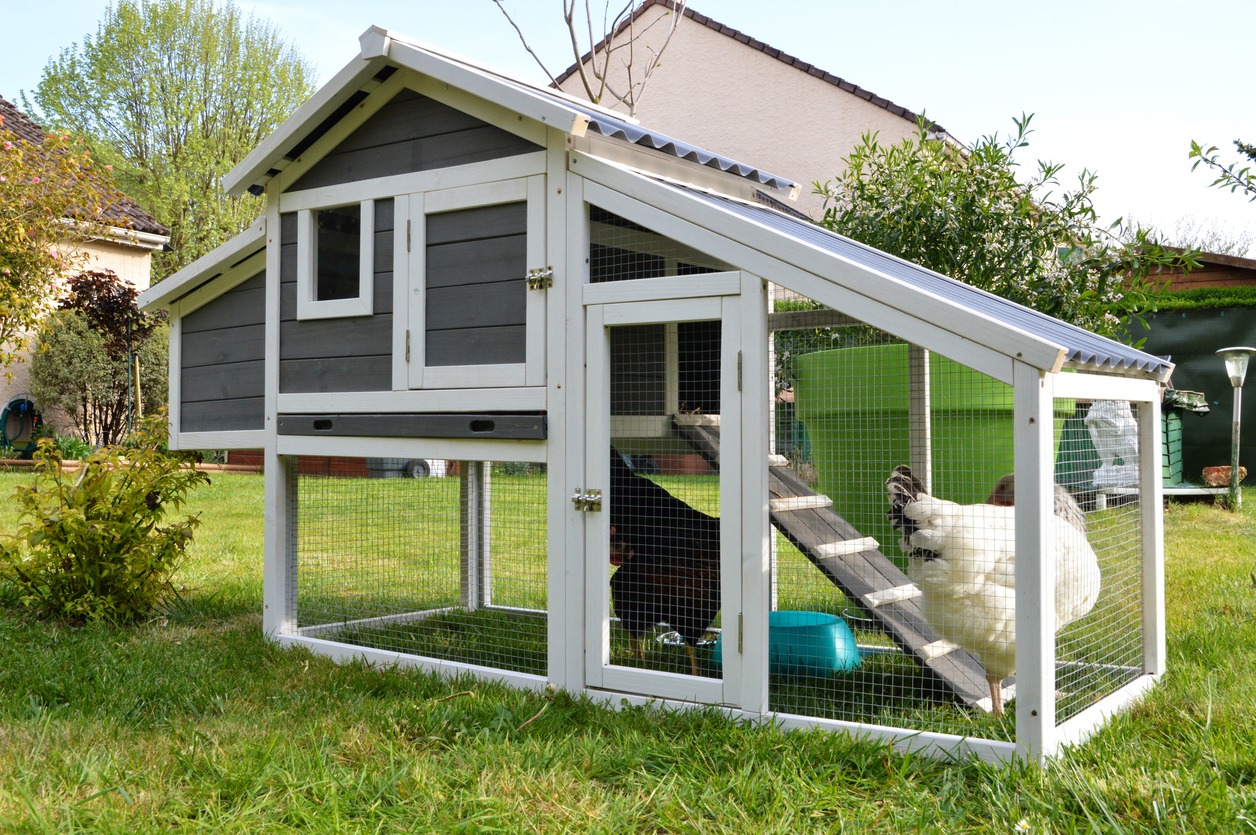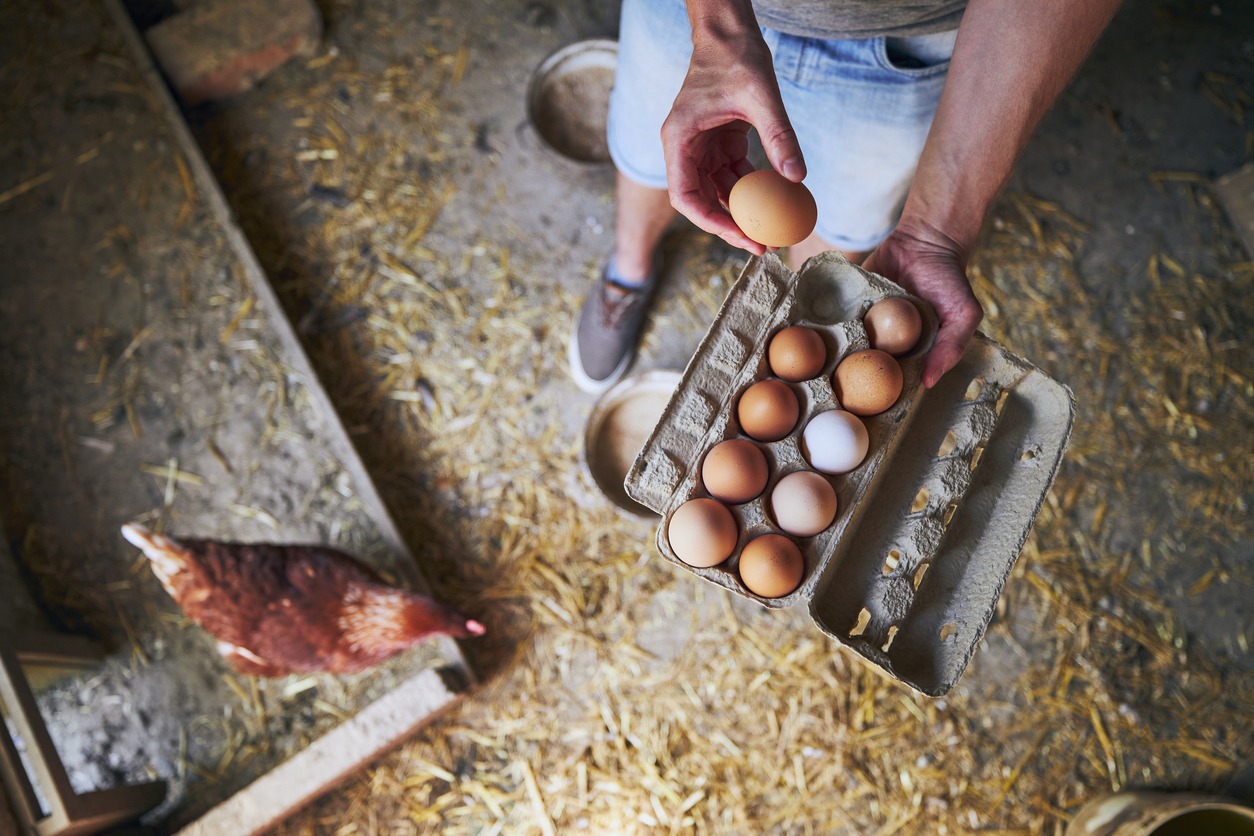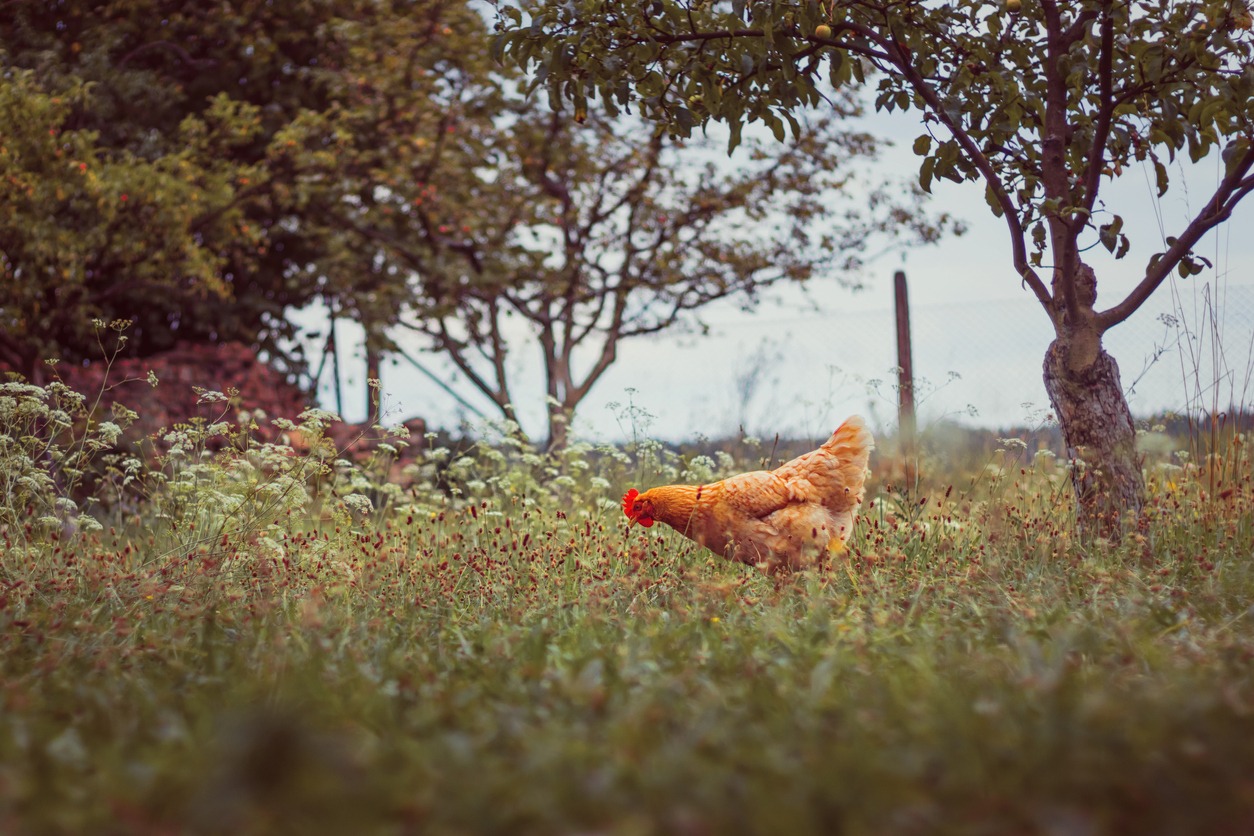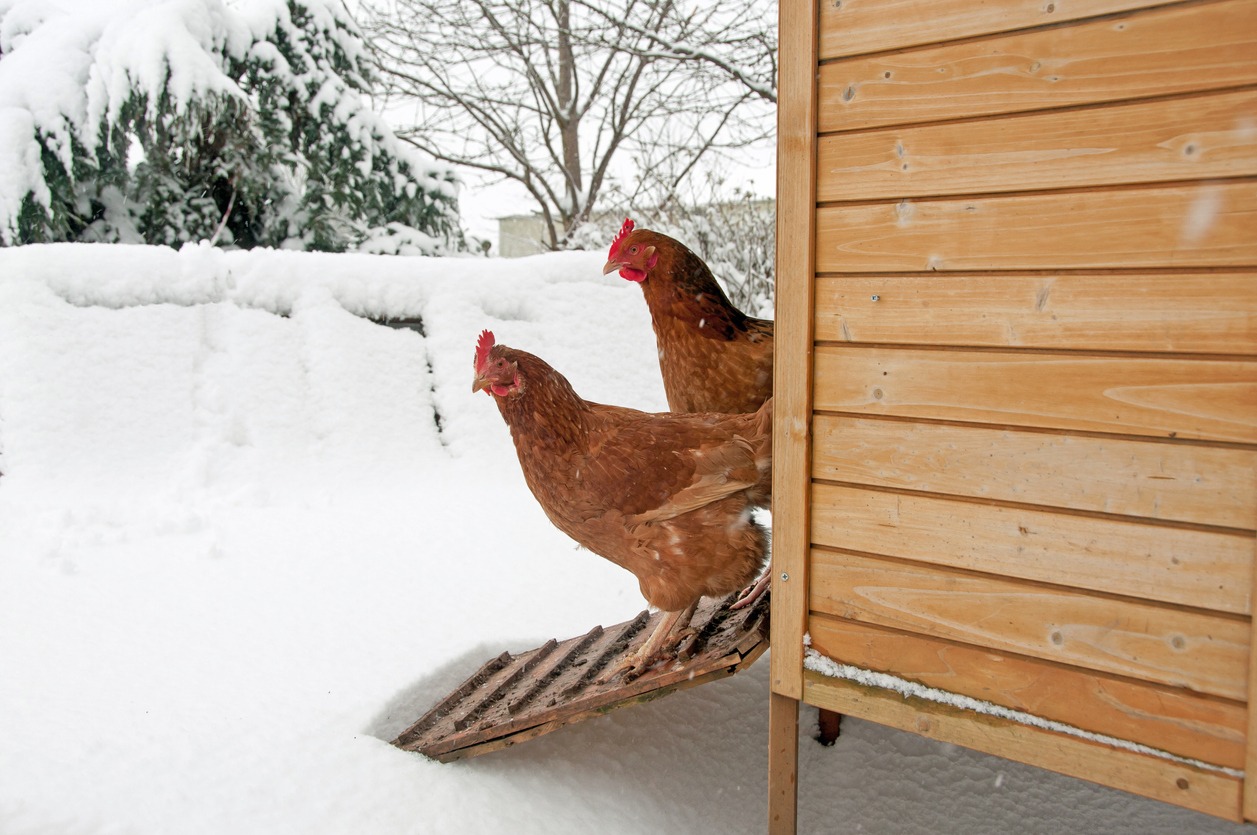Raising chickens has a range of benefits that contribute to a sustainable and healthy lifestyle. Firstly, they provide a consistent supply of fresh, organic eggs, adding nutritious goodness to your diet. Moreover, their manure acts as a fantastic natural fertilizer, enriching the soil and eliminating the need for chemical additives in your gardens. Another advantage is that chickens help with pest control by happily feasting on insects and pests that can harm your crops. In essence, these feathered friends offer a simple, eco-friendly way to enhance food production and maintain a thriving garden.
Keeping chickens around can be fun, but at first, it can be nerve-wracking. You may not know what to do, and if you’re nervous, one of the best things you can do is to understand the most common mistakes people make when raising chickens and how to avoid them yourself.
Here are some of the top mistakes people make when raising chickens:
Choosing the wrong breed
Choosing the right breed of chicken is crucial in successful chicken raising. While fluffy peepers may all look similar at first, conducting some research can reveal the variety of available breeds, each with unique traits.
For instance, if your goal is to have prolific egg layers, it’s best to select breeds like Leghorns rather than opting for pudgy Cornish cross-meat birds. Similarly, if you plan to expand your flock by hatching eggs, it’s best to avoid hybrid layers like Sex Links, as their offspring will lack the uniform traits of their hybrid parents. Additionally, it’s crucial to consider the breed’s temperament, especially if you’re raising chickens, to teach your child how to raise a backyard flock. Aggressive breeds may not be suitable for this purpose.
To make an informed decision about the breed, you can explore hatchery websites or refer to informative books about chickens. These resources provide valuable insights into each breed’s primary characteristics, including temperament, climate tolerance, foraging ability, size, and egg production rates. You can also talk to experienced local poultry farmers for insightful first-hand information.
Not providing enough protection from predators and pests
Predator attacks are an unfortunate reality of chicken raising, and they can occur at any time, day or night. Unfortunately, many coop designs overlook potential entry points that allow unwanted visitors like rats, mice, snakes, raccoons, and other creatures to infiltrate.
To safeguard your flock, predator-proof your coop as if it were a fortress. This means carefully considering every angle through which a predator could potentially breach and taking measures to ensure its complete security.
Here are some predator-proofing tips to bear in mind:
- Opt for hardware cloth instead of chicken wire, as the smaller openings will prevent tiny predators like weasels from gaining access.
- Thoroughly close up any cracks larger than the diameter of your thumb, as weasels and rats can squeeze through remarkably small spaces.
- Ensure all doors and windows are tightly closed and properly latched every night.
- Don’t overlook the roof of the chicken run, as predators can find a way in from above.
- Use hardware cloth on the bottom of the chicken run to deter digging predators. If your coop has dirt floors, you can also install hardware cloth inside.
- Install a wire mesh apron around the perimeter to discourage burrowing predators.
Regular inspections of your coop are essential to identify and seal any gaps, holes, or weak points that may serve as entryways for pests and predators.
Making the coop too small
One of the first concerns for a chicken owner is finding the right coop size for their new flock. One of the biggest mistakes made is building a coop or buying one that’s not large enough for the chickens occupying it.
And when a coop is too small, it leads to overcrowding, which causes lots of issues in chicken raising, such as stress, aggressive behavior among the chickens, and an increased risk of diseases. To ensure the well-being of your flock, each chicken should have a minimum of four square feet of space inside the coop and at least ten square feet of outdoor space.
While the tiny chicken coops available at farm and country stores may appear adorable, they are often impractical for backyard chicken keepers. Sure, chickens are small when they’re young, but when they start filling out, that cute little coop will probably end up too small. Also, these small coops are more susceptible to blowing over in strong winds, easier for predators to access, typically lack weatherproofing, and are often insufficient in size to meet your needs. Even if you initially plan to start with just a few chickens, purchasing a coop that can accommodate more is advisable.
Many chicken keepers will attest that raising chickens can be addictive, and you may find yourself wanting to expand your flock. By starting with a coop with room for growth, you will avoid the inconvenience of upgrading later on.
Opting for a larger, predator-proof coop, either by building it yourself or ordering one, ensures that you are making the right choice from the beginning. Be cautious of coops advertised as “suitable for rabbits” but claims to be suitable for chickens as well. Chickens quickly outgrow small coops, and selecting a coop that can accommodate their growth is essential.
Additionally, when browsing cute coops online, inspecting the materials used in construction is crucial. Often, these coops may have poor construction quality, weak or untreated wood, and may not withstand the elements over time. Following reliable DIY chicken coop plans or seeking high-quality builds is recommended to ensure a durable and safe environment for your chickens.
Building the coop in the wrong area
Selecting the right location for your chicken coop is critical in raising chicken. Building the coop in the wrong area can result in different challenges and potential issues. While constructing the coop too far from the house may reduce oversight and increase vulnerability to predator attacks, building it too close can lead to disturbances from odors and noise. Finding a balance that ensures convenient access for monitoring and maintenance while minimizing disruptions to your household or neighbors is crucial.
To ensure a suitable coop location, take into account several factors. Firstly, choose a well-drained area to prevent waterlogging and excessive moisture in the coop. Avoid low-lying regions prone to flooding during heavy rainfall. Elevating the coop or implementing proper drainage systems can help prevent water from entering the coop and causing issues such as dampness and mold.
Also, make sure to position the coop in an area that receives ample natural light. Orienting the coop to face the sun will provide essential daylight to the chickens, which promotes their well-being and natural behaviors. Adequate exposure to sunlight also aids in sanitizing the coop and helps control pests and bacteria naturally.
Additionally, think about the accessibility of the coop. Ensure it is situated in an area that allows easy cleaning, feeding, and collecting eggs. Provide a convenient pathway to the coop from your house or designated storage areas for feed and supplies to make daily tasks more efficient and enjoyable.
Using wrong or inadequate bedding
When it comes to choosing bedding options, it’s important to select materials that promote cleanliness, comfort, and overall well-being for the chickens. Straw, wood shavings, or pine needles are excellent choices for bedding, as they provide a suitable environment for the chickens while being absorbent and easy to manage.
One crucial aspect to avoid is using cedar shavings as bedding. While cedar may have a pleasant aroma, it can emit toxic fumes that can harm the respiratory system of chickens. It’s best to steer clear of cedar bedding to ensure the health and safety of your flock.
When raising chicks, pay close attention to the bedding in the brooder box. Using flat newspaper as the lining is not recommended, as it is not absorbent and can cause slipping and splayed legs, leading to permanent deformities such as spraddling legs. Shredded newspaper is only slightly better but still lacks absorbency.
Instead, opt for suitable alternatives. In the early days, when the chicks are just a few days old and learning about food, using paper towels as bedding is a great choice. Paper towels are absorbent, easy to replace, and provide a safe surface for the chicks. As the chicks grow older, typically a few weeks old, it is appropriate to switch to pine shavings. Pine shavings are highly absorbent, making it easier to maintain cleanliness in the brooder box.
Also, a thick layer of bedding serves as insulation during colder months, helping to regulate the temperature in the coop and keep the chickens warm. Adequate bedding also provides a comfortable resting surface for the chickens, promoting their overall well-being.
Once you have the correct bedding type, keep them clean, dry, and odor-free. It must be regularly replaced as the buildup of feces and debris can harbor parasites and bacteria that are harmful to your chickens. Wet or soiled bedding also can lead to health issues, such as respiratory problems and ammonia buildup.
Not enough light
Light plays a crucial role in the biological functions of chickens, particularly in their reproductive cycle and egg-laying patterns. Exposure to light affects their internal clock and stimulates hormonal changes that regulate egg production. Inadequate light can disrupt their natural rhythm, leading to reduced egg-laying or irregular laying patterns.
Sunlight is a rich source of essential vitamins, such as vitamin D, which promotes bone health and overall vitality in chickens. Additionally, natural light provides a more balanced and pleasant environment for the chickens, allowing them to exhibit their natural behaviors and forage more effectively. Position the coop in a location that receives ample natural light.
While natural light is ideal, ensuring that the coop receives ample sunlight throughout the day is important. If natural light is limited or inadequate, it is necessary to supplement it with artificial lighting.
When using artificial lighting, try to mimic the natural day-night cycle. Gradually introduce light in the morning and allow for a gradual decrease in intensity in the evening to simulate the gradual onset of darkness. This approach helps maintain the chickens’ natural rhythm and prevents abrupt disruptions to their biological clock.
Aim for at least 14 to 16 hours of light per day to provide sufficient light for your chickens. This duration of light exposure helps maintain consistent egg production and prevents behavioral issues that may arise due to light deprivation. Ensuring a suitable light regimen creates a more stable and productive environment for your flock.
Neglecting proper ventilation
Insufficient ventilation is a common mistake that can have detrimental effects on the health and well-being of chickens. Proper airflow is crucial in maintaining a healthy and comfortable environment within the coop. Issues such as excessive moisture, ammonia buildup, and respiratory problems can arise without adequate ventilation, putting the chickens at risk.
To add proper ventilation, install vents or windows in the coop that can be opened and closed as needed to control the airflow. This will ensure proper ventilation while minimizing drafts that can cause temperature fluctuations, which could stress the chickens.
Proper ventilation also helps remove stale air, odors, and airborne pathogens, promoting a healthier living environment for the chickens. Adequate airflow also helps reduce ammonia buildup, which can result from accumulated waste and irritate the chickens’ respiratory systems.
When considering ventilation, it’s crucial to strike a balance between providing sufficient airflow and avoiding excessive drafts. Properly positioned vents or windows that can be adjusted allow for controlled ventilation without creating direct drafts in the chickens’ living area.
Using the wrong heating system
While it’s natural to want to provide warmth to your flock during cold weather, certain heating methods can be unsafe and even pose a fire hazard.
One common mistake is relying on heat lamps in the chicken coop. Although it may seem like a logical choice, heat lamps have been known to cause coop fires, resulting in the loss of property and the lives of the chickens. Heat lamps can be difficult to fasten securely, and they risk falling into dry bedding, especially if bumped by active chickens.
Generally, heating the coop is often unnecessary as chickens have their own natural mechanisms to withstand the cold. However, if you believe additional heat is required, it is crucial to consult a professional to ensure the safe installation of a heating system for your coop.
You may be led to install safer alternatives such as radiant heaters or heated panels specifically designed for chicken coops. These energy-efficient options provide gentle and consistent warmth without the risk of accidents. They are also equipped with built-in safety features to minimize potential hazards.
Remember, when it comes to heating your chicken coop, it’s better to err on the side of caution and seek professional advice to ensure the safety and comfort of your flock.
Not collecting eggs regularly
Sometimes, due to laziness or a lack of understanding, beginner chicken keepers may underestimate the importance of collecting eggs regularly – especially during colder months when the temperature seems sufficient for preserving freshness. However, this negligence can result in unfortunate consequences. Regular egg collection not only promotes the cleanliness and integrity of the eggs but also helps in preventing pest infestations.
For instance, when eggs are left uncollected, they can become trampled, cracked, or even burst due to the cold. The cracks in the neglected eggs pique the curiosity of the chickens, leading them to peck at the imperfections. This behavior can develop into a hard-to-break habit of egg-eating. When one chicken develops that habit, it’s tough to break, and the rest of the flock follows because they all want a taste.
When your hens develop a nasty habit of egg-eating, you can implement strategies to deter them from doing so, such as placing porcelain eggs or filling some eggs with mustard to create an unpleasant taste. It can take several weeks of trial and error to break the cycle, so it’s best to avoid it from happening by collecting eggs every day.
Not counting the chickens every night
If you allow your flock to free-range during the day, make sure to count them to make sure there’s no one missing before you go home and sleep. While the saying “don’t count your chickens before they hatch” suggests that counting is unnecessary, in reality, it is crucial to count your flock each evening before closing the coop.
Free-ranging provides various benefits for your chickens, including access to fresh air, natural foraging, and exercise. However, it also exposes them to potential dangers, particularly from predators. By failing to count your chickens when they put themselves to bed, you may overlook any missing members of the flock, leaving them vulnerable to predation overnight.
But when you have counted them and found one or more are missing, you can promptly search for them and locate them to prevent them from falling prey to predators or getting lost. Not to mention – predators can be particularly active during twilight and darkness, making it even more important to identify any absent chickens before night sets in.
Besides counting your chickens, it is also important to ensure the coop is secure and properly closed for the night. This will further protect your flock from potential nighttime predators and minimize the risk of losing chickens.
Not protecting them during free-range time
Chickens are the most vulnerable to predators while free-ranging since they don’t have the protection of the coop and chicken run. Predators can appear unexpectedly and come in various shapes and sizes, posing a threat to the safety of your flock.
To ensure the protection of your chickens during free-range time, perform these safety measures:
- Stay in the yard with them. When your chickens are free-ranging, it is crucial to supervise them by staying in the yard. Your presence can act as a deterrent to potential predators and provide an extra layer of protection.
- Limit free-range time. Keep them in the coop and inside your fence most of the day, and let them out only in the late afternoon, then make them return to the coop at dusk. This way, you minimize their exposure to predators during vulnerable nighttime hours.
- Get a dog. Dogs can serve as excellent deterrents to predators. The mere presence of a dog on your property, with its scent and sounds, can discourage many predators from approaching. Well-trained dogs can even stay outside with your chickens and actively protect them from potential threats.
- Install a fence. Erecting a strong and secure fence around your property is not a foolproof protection against all predators, but it significantly reduces the chances of unwanted visits from creatures such as coyotes, foxes, and stray dogs. A solid fence acts as a physical barrier, keeping potential predators at bay.
- Introduce a rooster. Adding a rooster to your flock can be an effective way to enhance protection for your hens. Roosters naturally take on the role of guarding and watching over the flock. They are vigilant in identifying and alerting the hens to the presence of predators, acting as defenders.
Inadequate nesting boxes
Another mistake newbie chicken farmers usually make is not having a good nesting box (or lacking some) for their hens – or having none at all! For chickens, a safe, enclosed nesting box is absolutely a must to produce clean, crack-free eggs regularly.
Insufficient nesting boxes can also cause other issues, including competition among hens and increased stress levels. To ensure a comfortable and productive environment for your flock, ensure a minimum of one nesting box for every four to five hens in your flock. This allows each hen to have a designated space for laying eggs, reducing competition and potential stress. When hens have to compete for limited nesting spots, it can lead to squabbles, aggression, and a decline in overall well-being.
When setting up nesting boxes, it’s important to ensure they are clean, dry, and properly maintained. Dirty or damp nesting boxes can be uninviting to hens and may discourage them from using them. Regularly clean out any soiled bedding or debris and replace it with fresh, dry bedding material. This helps maintain a hygienic and comfortable environment for the hens to lay eggs.
The bedding material used in the nesting boxes should be appropriate and suitable for chickens. Common options include straw, wood shavings, or pine needles. These materials provide a soft and cozy surface for the eggs, promoting their protection and preventing breakage. Avoid using materials like cedar shavings, as they may emit toxic fumes that can harm the hens.
Properly designed nesting boxes also contribute to the well-being of the hens and the overall egg-laying process. The boxes should be adequately sized to accommodate the hens comfortably while they lay their eggs. A spacious nesting box allows the hens to move around and position themselves comfortably, reducing the likelihood of egg breakage.
Overfeeding or feeding them the wrong kinds of foods
Chickens are omnivores, so they enjoy different kinds of foods, including meat, fruits, vegetables, and dairy. But while they enjoy a diverse diet, it is important to be aware of the foods that should be avoided as they can be harmful or even fatal to chickens.
Before you start raising chickens, it is essential to familiarize yourself with the foods that are detrimental to their health, so you can avoid inadvertently feeding them something harmful. Here are some foods you should refrain from feeding your chickens:
- Sweets. These include candy, chocolate, desserts, or any sugary treats. These foods are unsuitable for their digestive systems and can cause various health issues.
- Certain plant leaves. Leaves from tomato plants, potato plants, and rhubarb should not be given to chickens as they contain toxins that can be harmful to their health.
- Citrus fruits. Chickens should not consume citrus fruits like oranges, lemons, or grapefruits, as the acidity in these fruits can disrupt their digestive system and cause discomfort.
- Onions. Whether raw or cooked, onions should be avoided as they contain compounds that can be toxic to chickens and potentially lead to anemia.
- Caffeine or alcohol. Keep chickens away from any foods or beverages containing caffeine or alcohol, as these substances can adversely affect their health.
- Fried foods. These are high in fat and can lead to weight gain and related health problems.
- Uncooked beans, pasta, or rice. These foods are difficult for them to digest and may cause digestive issues.
- Junk food and highly processed foods. It is best to steer clear of feeding chickens junk food or highly processed foods, as they lack the necessary nutrients and can negatively impact their overall health.
Providing a balanced and nutritious diet is essential for the well-being of your chickens. Stick to appropriate foods such as grains, seeds, vegetables, fruits (excluding citrus), and poultry feed specifically formulated for chickens. If you have any doubts about a particular food item, it’s best to consult with a poultry expert or veterinarian to ensure the safety and health of your flock.
Not fencing the garden
If you are caring for a vegetable garden and chickens, make sure to fence up. It’s no secret that chickens love destroying gardens. Whether they’re gobbling up all the strawberries or spreading the carefully laid mulch across the yard – these feathered creatures seem determined to dismantle all your hard work.
To keep your garden safe, install a sturdy and tall fence. A free-range flock can decimate an entire season’s worth of garden efforts in just a single afternoon. Taking the time to secure the garden area will save you from the heartache of seeing your crops and landscaping destroyed.
Once you have successfully fenced off your garden, consider creating a separate garden specifically for your flock. This dedicated space will allow you to grow plants that are safe and beneficial for your chickens. You can plant crops like herbs or vegetables that provide nutritious treats for your flock while protecting your main garden from their foraging instincts.
Not preparing for extreme weather
As farm animals go, chickens are quite hardy, and most of them can adapt to the changing seasons. But taking necessary precautions to protect them from weather extremes, like scorching heat, freezing cold, heavy rain, or strong winds is still essential. Failing to do so can have detrimental effects on the health and well-being of your chickens.
During summer or hot weather, providing shade and ensuring proper ventilation is crucial to prevent heat stress among your flock. Put shade structures or use natural shade provided by trees or shrubs. Adequate airflow should be maintained in the coop to keep the temperature down, and misting systems or fans can be used to further cool down the environment if needed. Always provide fresh and cool water to keep the flock hydrated and prevent heat stress. You may also want to offer them frozen fruits and vegetables as cool treats during heat waves to help lower their body temperature.
Meanwhile, during the winter or cold weather, make sure to insulate the chicken coop and protect the chickens from freezing temperatures. Insulation can be achieved by using materials such as straw or hay to line the coop and covering any drafts that may allow cold air to seep in. Provide ample bedding material to keep the chickens warm during the chilly nights. Also, use frost-proof waterers to prevent the water from freezing, ensuring a constant water supply for the flock.
When facing heavy rain or high winds, it is vital to ensure the coop is structurally sound and well-maintained. Regularly inspect the coop for any leaks or weak spots that may allow water or drafts to enter. Repair any damages promptly to provide the chickens a safe and dry environment.
Conclusion
When starting to raise chickens, it is normal for anyone to make some mistakes. There is a learning process involved, but fortunately, chickens are forgiving creatures. By correcting these errors, maintaining a healthy and content flock becomes an achievable goal for many years to come.

